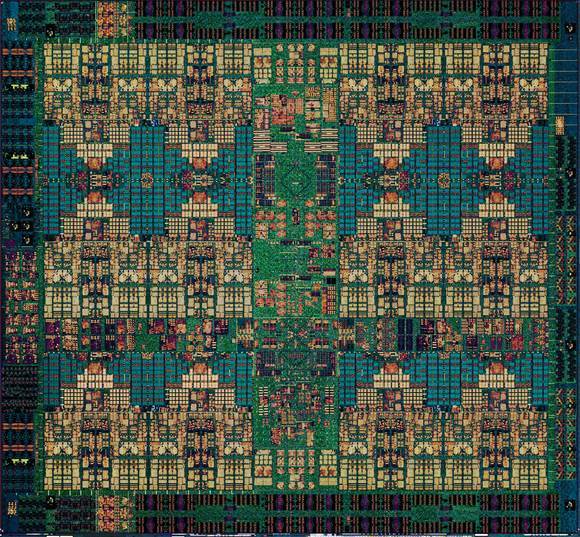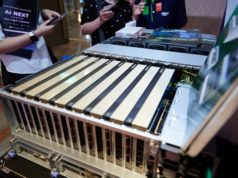The company offers details about its upcoming Power chip at the Hot Chips conference

IBM’s Power9 chip will have up to 24 cores.
Credit:
IBM
IBM’s Power processors have a storied history; they were notably used in the Watson supercomputer that outsmarted humans in the game of Jeopardy in 2011. The latest chip in the family, called the Power9, is coming next year, and it stands out for its blazing speed and for technologies never seen in chips before.
IBM is spilling Power9 details at the Hot Chips conference in Cupertino, California, this week. Here’s some important information about the chip.
Power9 servers will be smarter than the Jeopardy winner
The sheer computing power in Power9 will make supercomputers virtually unbeatable in Jeopardy, unless a superhuman demonstrating exceptional intelligence comes along. The Power9 architecture has up to 24 cores and provides blazing throughput to speed up complex calculations.
The cool part about this chip is its versatility: It has a range of connectors to attach FPGAs (field-programmable gate arrays), GPUs, and ASICs (application-specific integrated circuits). Those co-processors could accelerate computing to help run tasks related to databases, cognitive computing, visual computing, and hyperscale web serving.
The chip is for servers, not PCs
IBM will put its Power9 chip in homegrown servers costing more than US$6,000. Lower-priced Power9 servers could come from outside server makers, mostly from China, already building low-priced x86 servers in large volumes. Power chips were exclusive to IBM servers until 2013but are now available to partners of the OpenPower Foundation, which was formed by IBM to help proliferate Power chips.
IBM’s ultimate goal is to challenge Intel’s x86, which dominates the server market. Expect to see Power9 servers in mid-2017. The servers will support versions of Linux and Unix.
New technologies galore
The Power9 CPUs will need the help of co-processors for tasks like machine learning, so they will have a wide range of bus slots to connect many components. Power9 is the first processor with PCI-Express 4.0, providing bandwidth of up to 16 gigatransfers per second, which is twice that of PCI-Express 3.0. It also is the first with NVLink 2.0, which provides the bandwidth of up to 25Gbps for Nvidia’s latest GPUs. It also has an all-purpose CAPI 2.0 interface, designed for chips like FPGAs, ASICs, and new types of memory like phase-change memory (PCM) that won’t fit into the other slots.
Custom Power9 chips could be available
IBM will license the Power9 architecture to companies that want to build custom chips. So it’s possible you’ll see non-IBM Power9 chips available in the future. But for now, most server makers are taking IBM’s Power9 chips and putting them in servers. Only one company, Suzhou Powercore Technology, makes Power variants, but it’s not certain yet if the company will make Power9 derivatives.
OpenCompute servers may be available
Power9 is already scheduled to be used in some servers. The Zaius server design from Google and Rackspace will be submitted to the Open Compute Project (OCP), an open hardware design project, and it will likely approve the design. The design will provide companies the schematics to build Power9 servers in-house.
OCP designs are particularly popular with hardware technologists at financial organizations, many of which use Power chips in high-end servers. The Power9 chip will also be used in a 200-petaflop supercomputer called Summit, scheduled to be deployed in 2018 by U.S. Department of Energy at the Oak Ridge National Laboratory.

![[Design Story] One UI Helps You Live Life Your Way – Samsung](https://loginby.com/itnews/wp-content/uploads/2025/11/1763476351_Design-Story-One-UI-Helps-You-Live-Life-Your-Way-238x178.jpg)





